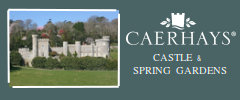- Shop Now
- Burncoose Specialities
- This Month
- Offers & Promotions
- RHS Chelsea Flower Show 2024
- 40 years at Burncoose
- Engage With Us
- Information, Help & Advice
- About Us & Our Services
- Terms & Conditions
- Log In / Register
LONICERA
Commonly known as Honeysuckle
Lots more in this family than the well-known periclymenum, the common one with the most difficult name, especially the underrated nitida which can make neat edging and hedging. Subtle fragrance from the winter flowerers.
Genus of about 180 species of deciduous and evergreen shrubs and twining climbers, widely distributed throughout the northern hemisphere. They are found in varied habitats ranging from woodland and thickets to rocky places.
The native L. periclymenum, woodbine, the epitome of bucolic old England, is most scented at night drawing in night flying moths. A must for any garden with a natural feel.
-
Deciduous
-
Evergreen
-
ClimberSome of these climbing plants will need trellis or wire supports if grown on walls or fences. Other grow aerial roots and are self-clinging
-
Medium shrubTypically grow to around 4-6 feet in height
-
Tall Shrub
-
Additional Features
 Good to knowWildlife plant. All flowers are attractive to insects and the twining stems provide shelter for nest sites. Birds eat berries. Grown for their tubular or funnel- to bell- shaped, often fragrant flowers which are usually 2-lipped or have 5 small, spreading lobes. White flowers turn yellow when pollinated.
Good to knowWildlife plant. All flowers are attractive to insects and the twining stems provide shelter for nest sites. Birds eat berries. Grown for their tubular or funnel- to bell- shaped, often fragrant flowers which are usually 2-lipped or have 5 small, spreading lobes. White flowers turn yellow when pollinated. Place of originNorthern hemishpere.
Place of originNorthern hemishpere. -
Wildlife
 Bee friendly
Bee friendly Bird friendlyRabbit Resistant
Bird friendlyRabbit Resistant
Buy Varieties of LONICERA
CLIMBING HONEYSUCKLES
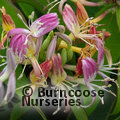
LONICERA alseuosmoides
a rare evergreen climbing species with funnel-shaped flowers yellow outside and purple within. Black berries with a bluish tinge
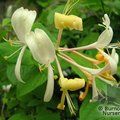
LONICERA x americana
(Syn. Grata) - very sweet-scented honeysuckle. Flowers start white, passing to pale and then deep yellow, heavily tinged purple outside
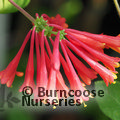
LONICERA brownii 'Dropmore Scarlet'
clusters of deep orange-scarlet tubular flowers

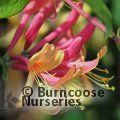
LONICERA x heckrottii 'Gold Flame'
two-tone flowers of orange and purplish pink. Fragrant climber
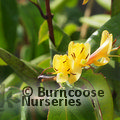
LONICERA henryi
evergreen, yellow and purple flowers and black berries
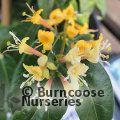
LONICERA henryi 'Copper Beauty'
attractive dark copperish coloured new growth
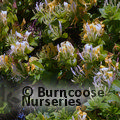
LONICERA japonica 'Halliana'
very fragrant flowers white changing to yellow
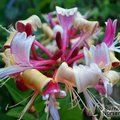
LONICERA periclymenum 'Belgica'
reddish purple flowers fading to yellowish

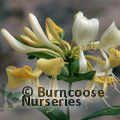
LONICERA periclymenum 'Graham Thomas'
clear creamy yellow, heavily scented
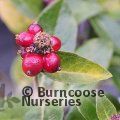
LONICERA periclymenum 'Honey Baby'
scented creamy-white flowers in summer. Compact growth

LONICERA periclymenum 'Rhubarb and Custard'
two-tone deep pink and creamy yellow richly scented flowers. Relatively compact

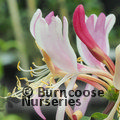
LONICERA periclymenum 'Serotina'
Dutch honeysuckle, late with rich purplish-red flowers
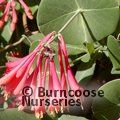
LONICERA sempervirens
twining honeysuckle with scarlet and orange trumpets
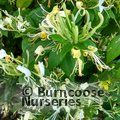
LONICERA similis var delavayi
semi-evergreen with abundant creamy-white fragrant flowers in late summer through to autumn

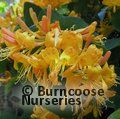
LONICERA x tellmanniana
oval leaves and long copper-yellow flowers with a tinge of red before they open. Prefers a shady situation for best results
Useful extras...









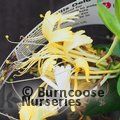
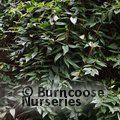
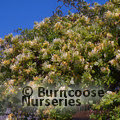
 Gift-wrapping available
Gift-wrapping available
